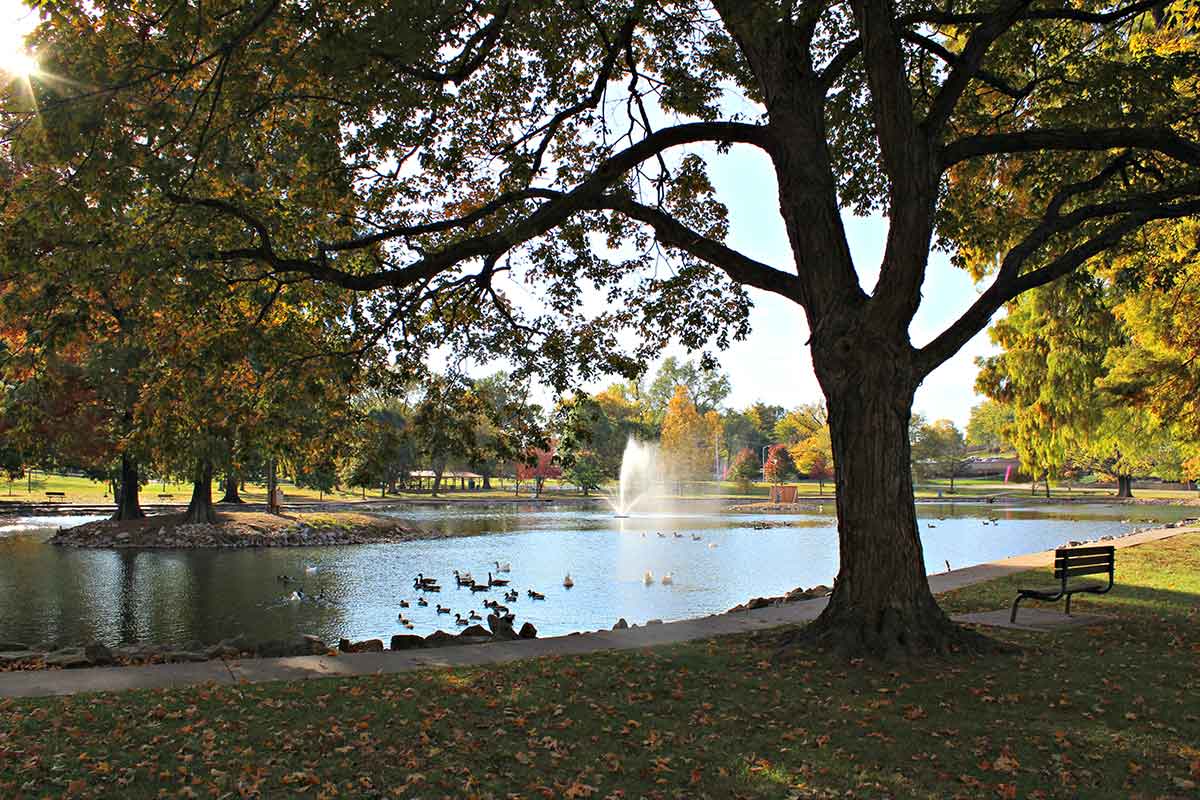This article is presented in partnership with Visit Cape.
“We are a river community—our whole existence. The only reason that there is a settlement is because of the river,” says Denise Lincoln, a local historian and a forty-year resident of Cape Girardeau. If you want to see the history, she says, you have to start at the river and go west.
Walking west through Cape Girardeau is a walk through time. From the river town’s founding, through African American history, to the Civil War, and modern-day hauntings, this town awakens the historian in every visitor. Through historical preservation efforts of the city, its rich history is easy to see. Cape Girardeau was built on river trade and traveling consumerism, and its prosperous beginnings are still visible today.
African American culture has played a key role in in Cape Girardeau’s history, from slavery to abolition to religious and education sites. The Court of Common Pleas is home to records that show the annual slave auction for the city was held there until slavery was abolished in 1865. Soldiers of the U.S. Colored Infantry (USCI) who fought to abolish slavery in the Civil War are buried at Fairmount Cemetery. Another significant site founded in 1940, Holy Family Catholic Church was established when three African American teenagers asked a local priest and his parish to build a Catholic church for the neighborhood’s African American community. The church included a two-room school in the basement that served forty-three students. In 1890, Lincoln/John S. Cobb School served African American children of Cape Girardeau and held classes until 1953. The school was originally named Lincoln School, but was renamed the John S. Cobb School in 1952 to honor Tennessee slave, John S. Cobb, who moved to Cape Girardeau in the late 1800s and became a top African American educator in Missouri.
Civil War ties run throughout Cape Girardeau and they include a major battle fought there in 1863. Confederate Brig. Gen. John S. Marmaduke ordered five thousand men to aid in an attempt to disrupt Union operations in southeast Missouri. He predicted U.S. Brig. Gen. John McNeil, who was stationed in Bloomfield, Missouri, would retreat to Union headquarters. However, McNeil and his men fled to Cape Girardeau. There, the two sides fought a four-hour battle on a dreary Sunday that ended with deaths and casualties on both sides. In the end, Confederate forces retreated to Arkansas. A self-guided tour of the area reveals more about Cape Girardeau’s role in the civil war, and Fort D, the last remaining fort from this time, is also open for tours.
Ghost stories and haunting legends add mystery to Cape Girardeau’s history. The hauntings of Cape River Heritage Museum draw thrill seekers to the 111-year old building. The museum has served several purposes over the years, from city hall to fire and police stations to a theater. The phantom stories began in the ’70s with reports of groups of running men, heavy footfalls on the stairs, and sickening odors. There are also ghost reports in the town’s oldest cemetery, Old Lorimier Cemetery, with eerie accounts dating back to 1938.
The people of Cape Girardeau work hard to protect the city’s rich history. With roots on the river that hearken back to when Lewis and Clark were exploring America, then standing through slavery, the Civil War and modern America, this Missouri town offers a unique opportunity to explore American history.
Related Posts
The Great Outdoors in Cape Girardeau
Nature and inspiration will find you in southeast Missouri.
Sample Celtic Cuisine in Cape Girardeau
A sign at the front door greets customers, declaring: “There are no strangers here, only friends who have not yet met.” The lively pub and warm, welcoming dining room boasts a massive fireplace and a wall of family history.


